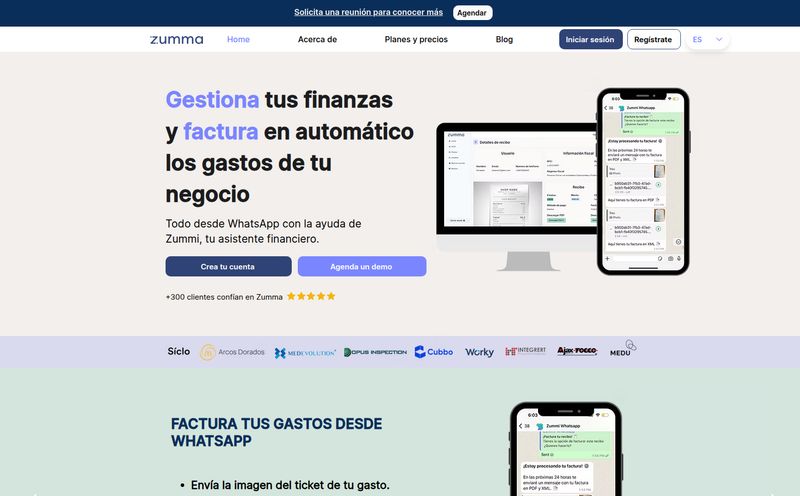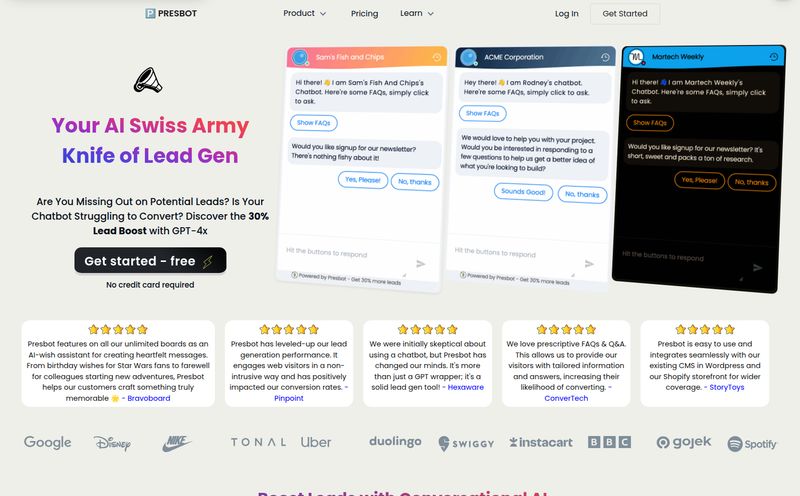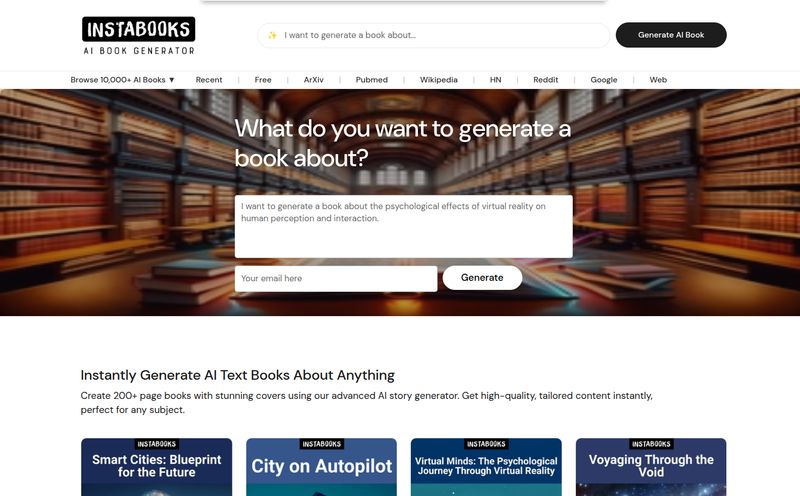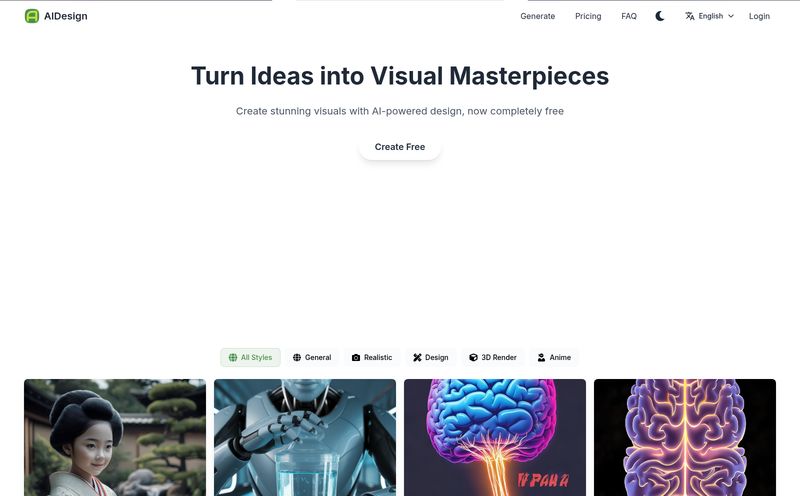The AI space is getting… crowded. Every single day, there's a new model, a new platform, a new “ChatGPT-killer” that promises to change everything. We all know the big names from Silicon Valley. They’re plastered across every tech blog and LinkedIn feed. But the world is a big place, and honestly, some of the most interesting developments are happening elsewhere.
Which brings me to MiniMax. A few weeks ago, their name popped up on my radar through a partnership announcement. My first thought? “Oh great, another one.” I get cynical sometimes, comes with the territory of wading through marketing fluff for a living. But I poked around. And then I kept poking. And I have to say, I'm genuinely intrigued. This isn't just another wrapper on an existing API. MiniMax feels different. They're a major technology company, one of Asia's pioneers in large language models, and they’ve built their entire model family from the ground up.
So, I decided to do what I do best: put on my SEO/dev hat and really look at what this platform offers. This isn't just a spec sheet breakdown. This is my take on whether MiniMax is worth your time and attention.
So, What Exactly is MiniMax?
First off, MiniMax isn't trying to be your new desktop chatbot. At its core, it's an API-first platform. This is built for people who build things—developers, both at big enterprises and the indie hackers burning the midnight oil. They provide the raw power, the engine, for you to create your own AI-native applications.
The company prides itself on its “full-stack self-developed model family.” Why does that matter? It means they control the entire process, from research to deployment. They’re not just putting a new coat of paint on someone else's technology. This allows for deeper integration between their different models and, frankly, it’s a much heavier lift that signals they're in this for the long haul.
A Look Under the Hood at MiniMax's AI Models
Alright, let's get to the good stuff. The tech. MiniMax isn’t a one-trick pony. They're playing the multimodal game, offering a suite of models that handle text, speech, and even video. This is where things get exciting for me.
The Text Titan: MiniMax M1
The foundation of any good AI platform is its text model, and MiniMax comes out swinging with their M1 series. They boast some pretty hefty numbers: an 80K context length and a staggering 1M token input capability. Now, for the non-devs in the room, what does that mean? It’s like the difference between having a small notepad and a massive workshop table. A 1M token input isn't for writing a marketing email; it's for feeding the AI an entire book or a massive codebase and asking it to perform complex analysis. It’s a huge workspace for incredibly complex tasks. This could be a game-changer for legal document analysis, in-depth research, and sophisticated code generation.

Visit MiniMax API Platform
Making Waves with MiniMax Speech 02
Text-to-speech has been around for ages, right? From clunky robot voices to the smoother assistants we have today. But MiniMax’s Speech 02 model seems to be aiming for a different level. They describe it as “Intrinsic Zero-shot,” which is a fancy way of saying it can perform speech tasks it wasn't explicitly trained for, with a high degree of naturalness. This points to a deeper, more fundamental understanding of human language and intonation. I'm thinking beyond just reading articles aloud. Imagine dynamic, emotionally-aware character voices for gaming, hyper-realistic voice cloning for dubbing, or personalized audio assistants that actually sound… human. It’s a subtle but huge leap.
The Visual Frontier: Hailuo 02 and Video AI
This is what really grabbed my attention. High-quality AI video generation is still the wild west. And MiniMax is staking a serious claim with their Hailuo-02 model. We're talking native 1080p video generation with a 32k context length. But here’s the kicker they mention: an understanding of physics theory. Mind. Blown. This suggests an AI that doesn't just create moving pictures, but understands object permanence, gravity, and realistic motion. It's the difference between a puppet show and a Pixar movie.
Their recent integration into Envato's Videezy platform is a massive real-world validation. You don't get that kind of partnership unless your tech really works. This, combined with their other video APIs (they mention T2V, I2V, etc.—likely Text-to-Video and Image-to-Video), positions them as a very serious player in the creative AI space.
The Developer Experience with the MiniMax API
Power is useless if you can't access it. I’ve spent countless frustrating hours wrestling with poorly documented, convoluted APIs. It’s a special kind of pain. MiniMax claims their APIs are “user-friendly.” From what I can see in their documentation structure, it looks clean and well-organized, which is a great start.
Of course, there are the usual hurdles. You'll have to manage API keys, which is standard procedure for any secure system. And there will be rate limits. Anyone who’s ever tried to run a large-scale process on an API knows the sting of hitting a rate limit. It's a con, sure, but it's also a necessary evil to ensure platform stability for everyone. It’s not a dealbreaker, just a practical reality to plan for in any serious project.
Let's Talk About the Elephant in the Room: Pricing
Okay, so I’m all excited, and I go looking for the pricing page to see how much it’ll cost to play with this stuff. And… crickets. There’s no public pricing page. I can practically hear the collective groan. I get it, I really do. I’m a huge advocate for transparent, pay-as-you-go pricing.
But let’s put on our business hats for a second. The lack of public pricing is a pretty clear signal about their target audience. This isn't aimed at the weekend hobbyist looking to spend $5 a month. This is an enterprise-grade solution. They want you to contact sales, discuss your use case, and get a custom quote. It’s a classic B2B SaaS model. While it’s a bit of a barrier, it also makes sense for a platform this powerful. They’re selling jet engines, not go-kart motors.
The Good, The Bad, and The Intriguing
So, let's wrap this up. Instead of a boring pro/con list, here’s how I see it.
The Good: The performance claims are top-tier. The versatility is undeniable; having high-quality text, speech and video models from a single provider is a massive advantage. It's a true multimodal Swiss Army knife for AI developers. Plus, their focus on building everything in-house gives me confidence in the long-term stability and vision.
The... Complicated: The pricing mystery is a bit of a hurdle. It means you can't just swipe a credit card and get started. And yes, you’ll have to deal with rate limits and API key management, but that’s just the price of admission for working with any serious API.
The Intriguing: This is the part that sticks with me. A physics-aware video model? A text model that can chew on a million tokens? The serious global partnerships? MiniMax isn't just copying the homework of the established players. They're clearly charting their own course, and it's a very, very interesting one to watch.
Frequently Asked Questions about MiniMax AI
- What is MiniMax AI best for?
- From my analysis, it seems ideal for enterprise-level or serious developer projects that require high-performance, multimodal AI capabilities. If you need to integrate text, realistic speech, and high-quality video generation through a single API, they are a very strong contender.
- Is MiniMax a competitor to OpenAI or Google?
- Yes and no. They compete in the same space of providing foundational AI models via API, but MiniMax seems to have a particularly strong focus on multimodal integration (especially video) and a significant foothold in the Asian market. They're less of a direct competitor and more of a powerful alternative with different strengths.
- How do I get access to the MiniMax API?
- You’ll need to visit their official website and look for the API Platform or developer section. You'll likely have to sign up and request an API key, and given their pricing model, you may need to speak with their team to get full access.
- Is MiniMax free to use?
- It's unlikely to be completely free for significant use. While they might offer a limited free trial or a developer sandbox tier, the lack of public pricing strongly suggests their main offerings are paid, custom-quoted enterprise plans.
- What does 'multimodal AI' mean?
- Multimodal AI refers to artificial intelligence that can process, understand, and generate information across different formats or “modalities.” For MiniMax, this means their systems can work with text, audio, and visual data, often in combination.
- Where is MiniMax based?
- MiniMax is a leading technology company described as one of the pioneers of large language models in Asia, indicating its origins and strong presence in that region.
Final Thoughts
In a field that feels increasingly dominated by a few household names, it’s refreshing and important to see a company like MiniMax not only holding its own but innovating in genuinely exciting ways. They are a serious, high-performance contender, particularly for anyone whose ambitions go beyond simple text generation.
The AI revolution isn’t being televised from just one location; it’s a global phenomenon. And based on what I've seen, MiniMax is absolutely a channel worth tuning into. If you're a developer or a business looking for a powerful, versatile AI engine, I’d say they are definitely worth the effort of reaching out and starting a conversation.
Reference and Sources
- MiniMax Official Website: https://api.minimax.chat/



